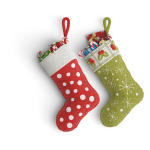
Navigating Boating Safety: Essential Tips For Smooth Sailing

Sailing can both be a fun and relaxing experience. You can take time out from your busy life and relax on the boat, enjoying the soothing sound of the waves. You can also use your boat to explore nearby islands, secluded coves, or coastal areas. Imagine visiting different ports and marinas to immerse yourself in new cultures and experiences. Wouldn’t that be an exciting adventure?
Boating has safety risks, including collisions with other boats, falling overboard, or storms and high winds. These can all threaten personal safety and the safety of others onboard. Hence, it’s crucial to take precautions and set measures to ensure a safe and smooth sailing experience.
Whether you’re a seasoned boater or a newcomer to the boating world, these eight tips would help prevent unfortunate accidents and mishaps, ensuring a worry-free sailing adventure. Read on to get started.
1. Regularly Inspect And Maintain The Parts
Keeping your boat in excellent condition is essential for performance and safety. Regular maintenance and inspections can help identify any issues that may compromise your vessel’s functionality. Every component should be properly inspected and maintained—the engine, rigging system, electrical system, etc. Additionally, ensuring the hull is free from damage, cracks, or wear is vital for safe navigation.
If you need to replace any body parts, it is recommended that you conduct thorough research to guarantee you find high-quality and appropriate replacements. For example, when contemplating a gyro-stabilization system like a Seakeeper 6, examining the available models’ dimensions, weight, and performance is important. Reading a Seakeeper 6 review lets you learn about the installation process, maintenance needs, and advantages of utilizing this model.
To ensure that you make informed decisions about boat components, seek the advice of experts. Marine engineers and naval architects specialize in designing, building, and maintaining boats, ships, and related equipment. Consulting them can help ensure your boat’s components meet safety standards and reduce the risk of malfunction and accidents while on the water.
2. Familiarize Yourself With Local Boating Laws
Before setting sail, familiarize yourself with your area’s boating laws and regulations. Each region may have different requirements regarding the operation of boats, speed limits, navigational rules, and safety equipment. By understanding and following these laws, you can ensure a safer experience for yourself and other boaters.
For instance, some areas may require a specific navigation light set up during nighttime sailing or mandatory equipment such as fire extinguishers, life jackets, and distress signals. Knowing and adhering to these regulations helps you avoid potential penalties and promotes a safer boating environment.
3. Check Weather Conditions Before Setting Sail
One of the most vital aspects of boating safety is monitoring and understanding weather conditions before embarking on a journey. Unpredictable weather patterns can quickly turn a pleasant boating trip into a challenging or dangerous one. Stay informed about weather forecasts from reliable sources, and pay attention to any warnings or advisories.
For example, if you’re planning a day of boating and the forecast indicates a possibility of thunderstorms, you must reconsider your plans for your safety. Unexpected storms can bring strong winds, lightning, and large waves, making navigation unsafe. Always prioritize your safety and be prepared to adjust your boating plans accordingly.
4. Develop A Pre-Departure Checklist
Creating a pre-departure checklist is an excellent practice to ensure you have all the necessary safety measures before setting sail. This checklist should cover safety equipment, communication tools, navigation aids, and emergency supplies. By following this checklist every time you go boating, you can ensure that nothing vital is overlooked.
For instance, your checklist may include life jackets, a first-aid kit, a fire extinguisher, a marine whistle, and navigation charts. By systematically going through this list and confirming that everything is present and in working order, you can navigate with confidence, knowing you’re well-prepared for any situation.
5. Assign A Designated Skipper
When sailing a boat with a group of friends or family, assigning a designated skipper is essential. This individual should have the necessary knowledge and experience to operate the boat safely. By designating a responsible skipper, you can prevent confusion and ensure that someone is fully focused on piloting the vessel and making critical decisions.
For example, the designated skipper should be familiar with navigational charts, be knowledgeable about navigational markers, and understand how to interpret the boat’s instruments. This designated role helps maintain order and safety while allowing everyone else aboard to relax and enjoy the boating experience.
6. Have A Means Of Communication On Board
Having a reliable means of communication on board is vital for boating safety. A communication device allows you to reach out for assistance in an emergency or unforeseen circumstance. Depending on your location and the type of boating, consider carrying a Very High Frequency (VHF) Marine Radio, a satellite phone, or a cell phone with good reception.
For example, when immediate help is required, a VHF radio can make a significant difference. It allows you to make distress calls, communicate with nearby vessels or the coastguard, and obtain important updates or safety information from marine authorities.
7. Always Wear A Proper Personal Floatation Device
Wearing a proper personal floatation device (PFD) is non-negotiable. Regardless of your swimming ability or the distance to the shore, a PFD can make a life-saving difference by keeping you buoyant and providing additional insulation against cold water. Ensure you have the appropriate PFD for each person on board and that they are in good condition.
For instance, inflatable PFDs are popular due to their comfort and ease of movement. However, inspecting them regularly and maintaining proper inflation mechanisms is essential. Regular checks and servicing ensure that your PFD will function correctly when you need it the most.
8. Maintain A Safe Distance From Other Boats
When out on the water, it’s important to maintain a safe distance from other boats. Operating at a safe distance helps avoid collisions, reduces the risk of damage to your vessel, and ensures the safety of all boaters. Always keep a vigilant eye on your surroundings and be aware of other vessels’ speed, direction, and potential restrictions in their maneuverability.
For example, maintaining a proper distance from a fishing boat casting its fishing lines stops your boat from becoming entangled in its gear and minimizes any risk of injury to both parties. By maintaining awareness and respecting the personal space of other boaters, you contribute to a safer and more enjoyable boating environment.
9. Steering Toward A Safe Sailing Experience
By following these essential boating safety tips, you can confidently navigate the waters and enjoy a worry-free experience. Remember to prioritize safety and continually educate yourself on the latest guidelines and best practices to enhance your boating skills and protect yourself and others on the water. Stay safe, and may your cruising adventures be filled with excitement and unforgettable memories!
Feature Photo by Eugene Chystiakov on Unsplash


































